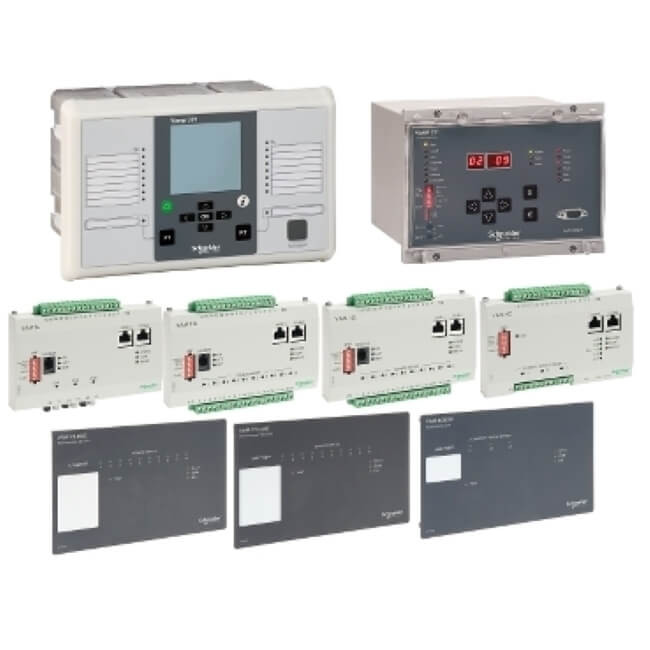New Fast Arc Protection Systems
| 26-05-2020 | By Nnamdi Anyadike
Fast arc protection is essential in today’s electrically wired environment given that electrical energy distribution systems continue to be prone to arc flashes (electrical equipment explosions). Typically, an arc protection system is made up of a trip relay, sensors and an arc quenching device. Arc flashes often occur as a result of insulation breakdown, due to equipment age and poor maintenance. Yet, despite their frequent occurrence and destructive potential, many types of switchgear are unfortunately left without arc flashes protection.
In the US, many incidents are underreported or are not reported at all, and some sources estimate there are five to 10 arc flashes each day. In the UK, meanwhile, EU statistics show that between eight and ten arc flash accidents occur every week. Key players in the global arc flash protection market include ABB Group; Siemens Ltd.; General Electric Company; Larsen & Toubro, Ltd.; Toshiba Corporation; Basler Electric Company; Mitsubishi Electric Corporation; Schweitzer Engineering Laboratories, Inc.; Littelfuse, Inc.; Schneider Electric SA; DuPont and Eaton Co. Plc.
ABB Arc Protection Upgrade’ Faster More Reliable’
In April, ABB announced the launch of an upgrade to its TVOC-2 Arc Guard System TM with the new current monitor unit CSU-2. The new CSU-2 current monitor unit is said to offer “higher precision, better monitoring and easier control with additional current sensors, based on Rogowski coils, as well as a touchscreen display and Modbus RTU communication.” The combination of the CSU-2 current monitor unit and the TVOC-2 arc monitor increases the protection level of switchgear and thus significantly reduces the time lost for maintenance in the event of an arc. The response time is less than 1 millisecond.
With the upgrade, the individual arc protection classifications for low and medium voltage switchgear can now be improved more quickly, and the settings can be intelligently adjusted via the central control systems of the system. Markus Klein, Head of Product Management for the Motor Starting and Safety product group, clarified: “CSU-2 is an amazingly simple device that provides additional protection before downtime for main and sub-distribution switchgear. Adding an intuitive touch screen display and connectivity ensures precision and is ideal for more complex distribution systems.”
Schneider VAMP Arc Flash Detection
Schneider Electric SA is a significant player in the global arc flash protection system market, and its Vamp arc flash detection units are versatile and independently operating devices for bay-based protection. Models available are the: VAMP 120, VAMP 121, VAMP 125 and more recently the VAMP 321.

VAMP Arc Protection
The units can detect arc flash faults and send a trip command to the circuit breakers within 1 millisecond to distinguish the fault. Some 10,000 of Schneider’s Vamp arc flash systems are in service worldwide, ranging from single arc protection units to multi-zone arc flash systems. The system measures fault current and light via arc sensor channels and should a fault occur, minimises burning time by quickly cutting off the current feeding the arc.
“Traditional arc protection methods do not provide fast enough protection and short arc burning times are critical, especially when the arc develops during maintenance work on the switchgear, jeopardising personal safety and life. The unique arc fault breaker functionality adds a new dimension to the total safety of the installation and the reliability of the power system protection,” says the company Web site. The latest offering, the innovative VAMP 321, combines the technology of the VAMP 50 and 200 series and that of the VAMP 221 arc flash protection system.
Siemens Reyrolle 7XG31 Arc Protection
Siemens most recent arc fault protection system on busbars, within metal clad switchgear and associated cable boxes, is the Reyrolle 7XG31. “The 7XG3130 - RA30 is an optical sensor that responds to the flash of light emitted during the incidence of an arcing fault. The onset of the light flash and detection by the RA30 occurs in a few milliseconds,” says the company. Conventional current based protection techniques are at times challenged by the nature of arcing faults and can result in slow protection clearance times. Slow protection clearance times increase the risk to nearby personnel and increase the degree of damage to plant and equipment.
By employing an optical detection technique, arc fault protection results in fast clearance of arcing faults says the company. An arc trip the only signal can be achieved within 10 milliseconds, which can be considerably faster than that provided by a traditional IDMT overcurrent relay. This is because the onset of an arcing fault can occur at relatively low fault currents.
ARCON® Arc Fault Protection System
The ARCON® arc fault protection system is based on light sensors (ARC-SL) that use optical fibre technology to monitor the main busbars and dropper bars, as well as all busbar assemblies and connection systems along their entire length. “The radiation emitted by the arc fault is detected via the sleeving surface of the sensor. Only one light sensor is required for each switchgear section and main busbar system,” says the company. The arc fault current is detected by measurement transducers positioned upstream of each feeder circuit-breaker. In the event of an arc fault, the light emitted by the fault and the arc fault current is detected by the sensors and evaluated in the master unit (ARC-EM). The central processing unit gives the disconnection signal to the quenching device (ARC-AT).
Outlook
The global arc flash protection market is expected to grow at a CAGR of more than 5% in the coming years. The increasing cost of smart arc flash control devices such as relays and current limiters, outside of the electrical equipment, is expected to boost arc flash detection and control systems.

